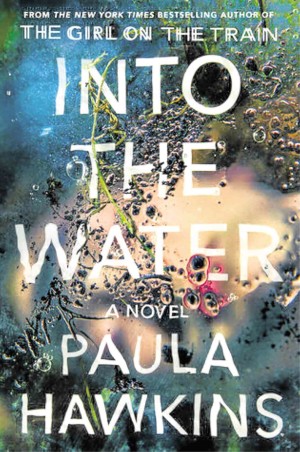
A polished tale of shifting narratives, substance abuse and domestic trouble, “Girl” sold more than 15 million copies, was translated into over 30 languages and adapted into a feature film that showcased a fantastic performance by Emily Blunt as the protagonist Rachel Watson.
Hawkins returns with literal and figurative splashes with her second novel, “Into the Water: A Novel” (Riverhead Books, New York, 2017, 386 pages).
This new book features even more unreliable narrators and a more complicated plot. In the tiny British town of Beckford, women have been drowning or drowned in a part of the omnipresent river for years, so much so that it’s now called the Drowning Pool.
“That’s the weirdest thing of all—it seems like whichever way you turn, in whatever direction you go, somehow you always end up back at the river.”
The book’s main character, Jules Abbott, returns to Beckford after her award-winning photographer sister Nel drowns in the river.
Jules returns with trepidation and trauma, having left Beckford for deep personal reasons, including an estrangement from Nel, who has a long and unexplained obsession with the Drowning Pool. Jules must not only deal with the police investigation of Nel’s death—was it a suicide or a murder—and come to terms with Nel’s only daughter, the sulking teenager Lena.
But as “Water” begins to swim out of Nel’s home, readers will be introduced to an initially intimidating number of characters, including detective Sean Townsend (who may or may not have been having an affair with Nel); ever suspicious Louise Whittaker (who blames Nel for the drowning death of her own daughter Katie); the mysterious fortuneteller Nickie Sage; the schoolteacher Mark Henderson, among several others.
We even meet some of the drowned women (Katie, Lauren and Abby) from flashbacks.
Instead of the alcoholism that seemed to doom “Girl’s’” Rachel, Jules has to contend with the town’s many secrets, old and new, big and small.
While a sympathetic character, Jules is not as compelling or as controversial as Rachel, but just as good enough to be effective as a protagonist. It is through her that readers will be able to tie together the complex web of events.
Initially seemingly incapable of figuring any of it out, Jules comes closer to the truth as Lena opens up and the investigation widens.
“Water” treads slowly at the beginning, burdened by the sheer amount of introductions and exposition. But once it hits page 204, Hawkins just keeps banging out one head-turning twist after another.
These twists build on each other as “Water” actually goes about trying to clear up all the unknowns it threw out at the reader at the start.
The book’s last hundred pages are irresistible in a stay-up-at-night-reading way. It’s less claustrophobic but much more complicated than “Girl.” It should surprise absolutely no one that Dreamworks already bought the rights to “Water.”
Beckford is a bad, bad place.
“People turned a blind eye, though, didn’t they,” Hawkins writes. “No one liked to think about the fact that the water in that river was infected with the blood and bile of persecuted women, unhappy women; they drank it every day.”
There are a lot of horrible secrets unearthed here. In fact, “Water” may suffer from too many twists because of the many moving parts Hawkins has put together here. There is a twist waiting at the very end of the very last page—that’s how many. If you love that, Paula Hawkins’ “Into the Water” is the kind of absorbing storytelling that will make waves.
Available in paperback from National Book Store.











































